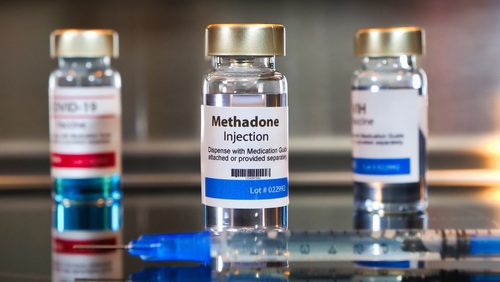By Barbara Greenwood Dufour
Opioid use disorder continues to affect lives and take lives. From 2016 to 2018, there was an estimated 48 per cent increase in overdose deaths in Canada. The Public Health Agency of Canada has reported that since the beginning of the COVID-19 pandemic, the rates of opioid-related harms and deaths has continued to increase.
Treatment for opioid use disorder involves the suppression of opioid cravings and control of withdrawal symptoms. This can sometimes be achieved with oral opioid agonists — most commonly methadone and buprenorphine. These two medications are, in fact, opioids themselves. But they’re less likely to cause euphoria, or a “high,” when taken at the prescribed dosage. Oral opioid agonists aren’t effective for everyone, however. Some people with opioid dependency will keep returning to street opioids despite repeated treatment with methadone or buprenorphine. For these individuals, injectable opioid agonist therapy is a proposed treatment alternative.
During injectable opioid agonist therapy, patients inject themselves with either diacetylmorphine (prescription heroin) or hydromorphone under the supervision of a health professional. Like oral opioid agonists, injectable opioid agonists are prescribed as part of a harm reduction strategy of care and are often delivered alongside non-pharmacological therapy such as counselling. But, unlike oral opioid agonists, they do produce the high of illicit opioids. It’s thought that injectable opioid agonists might help people with hard-to-treat opioid use disorder stay in treatment and also help reduce the harms of illicit opioid use.
The injectable opioid agonists provided as part of the treatment are free from the harmful additives, such as fentanyl, that are sometimes found in street opioids. And, because they’re provided in a treatment facility, timely care can be provided in the event of an overdose. Some have suggested that injectable opioid agonist therapy might also reduce risks to society because having access to these drugs from a treatment facility removes the need to resort to criminal activity to obtain them.
To find out what the research can tell us about the effectiveness of injectable opioid agonist treatment for opioid dependence, the health care community turned to CADTH — an independent agency that finds, assesses, and summarizes the research on drugs, medical devices, tests, and procedures. CADTH found two randomized controlled trials and one systematic review on this topic.
One randomized controlled trial looked at injectable diacetylmorphine for treating long-term users of heroin. It concluded that injectable diacetylmorphine, compared with placebo, appears to be effective for controlling heroin cravings and for improving anxiety, anger, emotional excitement, and well-being.
The systematic review looked at studies that compared injectable diacetylmorphine with other treatments, such as methadone. This review suggests that injectable diacetylmorphine along with flexible doses of methadone helped chronic users of heroin stay in treatment longer, be less involved in illicit drug use and criminal activity, have fewer criminal convictions, and be incarcerated less often. But it appeared to offer no better outcomes than methadone and other treatments in terms of adverse event rates and death.
The other randomized controlled trial looked at how the two injectable opioid agonist (hydromorphone and diacetylmorphine) therapies compare with one another. This study found that hydromorphone was not inferior to (or was no worse than) diacetylmorphine in terms of physical and psychological health outcomes, retention in treatment, criminal activity, and use of street opioids; but it was more likely to lead to adverse events.
Injectable opioid agonist therapy offers people with opioid use dependency a safer option. Therefore, it could certainly reduce some of the harmful aspects of illicit opioid use. But even though the limited amount of research into the effectiveness of injectable opioid agonists is encouraging, until more evidence becomes available, it’s not yet clear how well the treatment works, how well it works compared with other treatments, or its effectiveness on the long-term outcomes for people with chronic opioid dependency.
For more information, you can find CADTH review at cadth.ca/injectable-opioid-agonist-treatment-patients-opioid-dependence-review-clinical-and-cost, and for the latest evidence on opioids, visit cadth.ca/opioids. If you’d like to learn more about CADTH, visit cadth.ca, follow us on Twitter @CADTH_ACMTS, or speak to a Liaison Officer in your region: cadth.ca/Liaison-Officers.
Barbara Greenwood Dufour is a knowledge mobilization officer at CADTH.




